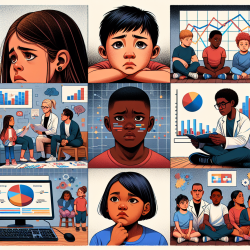Introduction
Child sex trafficking is a grave issue that impacts the lives of countless children across the United States. As healthcare providers, we are in a unique position to identify and assist victims, yet many of us lack the training and resources needed to effectively do so. In this blog, we will explore the findings from the research article "Child sex trafficking in the United States: Challenges for the healthcare provider" and discuss actionable steps practitioners can take to improve their skills in identifying and supporting these vulnerable children.
The Role of Healthcare Providers
According to the research, a significant percentage of child sex trafficking victims seek medical attention, often presenting with a range of physical and behavioral health issues. This places healthcare providers at the frontline of identifying at-risk youth. However, spontaneous disclosure of victimization by children is rare, necessitating a proactive approach by practitioners.
Key Areas for Improvement
To effectively recognize and respond to victims, healthcare providers need training and resources in three critical areas:
- Understanding Trauma: Knowledge of trauma and its impact on children is essential. Providers must be equipped to recognize signs of trauma and understand its effects on a child's behavior and communication.
- Victim-Centered Care: Adopting a human rights-based approach ensures that care is delivered in a manner that respects the dignity and autonomy of the victim.
- Developmentally Appropriate Interview Techniques: Utilizing age-appropriate and culturally sensitive interviewing techniques can facilitate disclosure and build trust with the child.
Building Trust and Rapport
Establishing trust with a child victim is a time-intensive process, often challenging in busy medical settings. Implementing screening tools, dividing responsibilities among staff, and prioritizing trafficking assessments can help overcome this barrier. Additionally, creating a safe and non-judgmental environment is crucial for encouraging disclosure.
Multidisciplinary Collaboration
Trafficked children have complex needs that extend beyond healthcare, including educational, social, and legal support. A multidisciplinary approach involving healthcare providers, victim service organizations, and government agencies is essential for comprehensive care. Developing detailed hospital or clinic protocols can assist providers in accessing appropriate resources and support networks.
Conclusion
Healthcare providers face numerous challenges in identifying and assisting victims of child sex trafficking. However, with increased awareness, training, and collaboration, we can make a significant impact. By prioritizing these vulnerable children in our practices, we can offer them the critical support they need to heal and thrive.
To read the original research paper, please follow this link: Child sex trafficking in the United States: Challenges for the healthcare provider.










